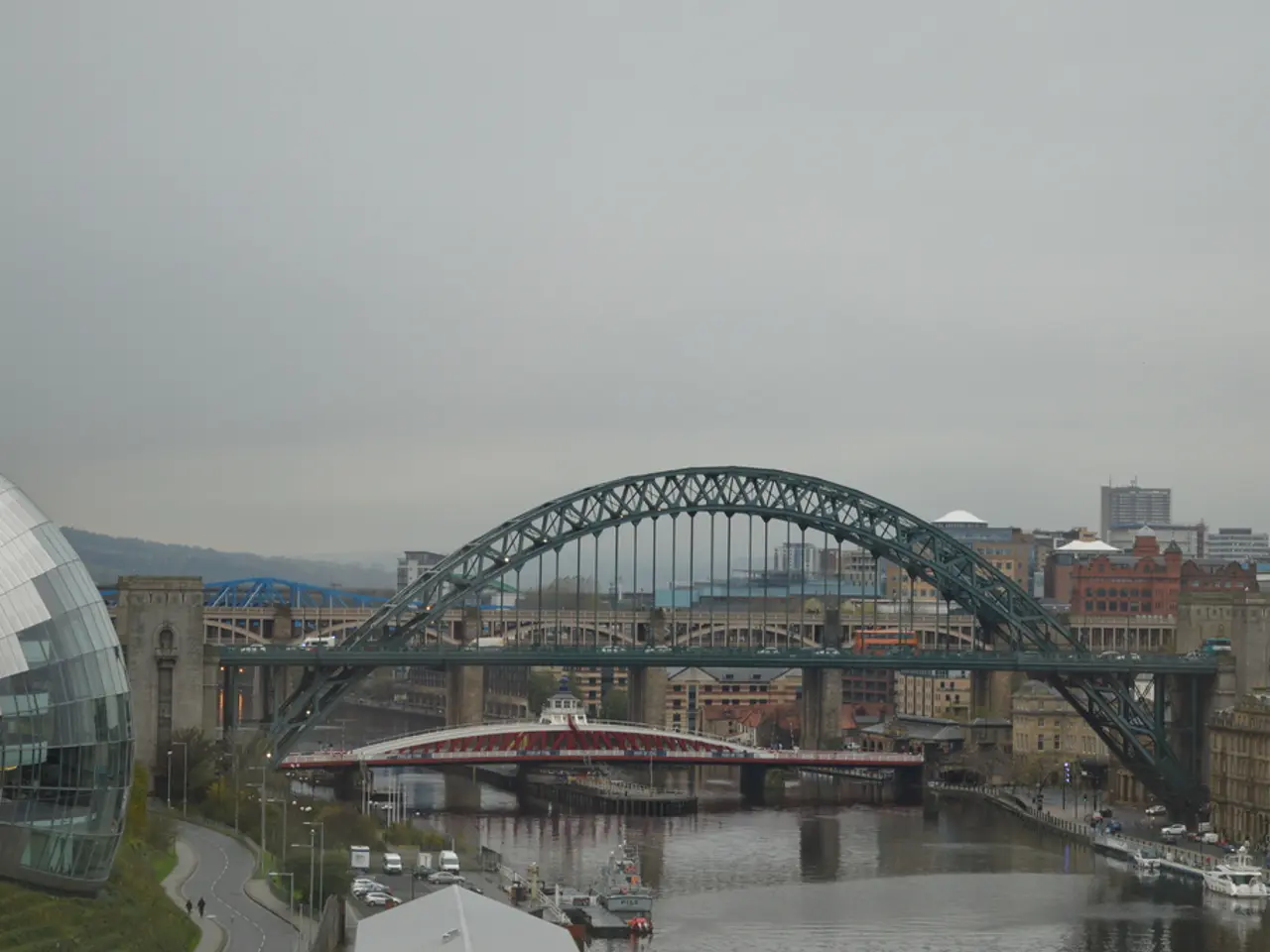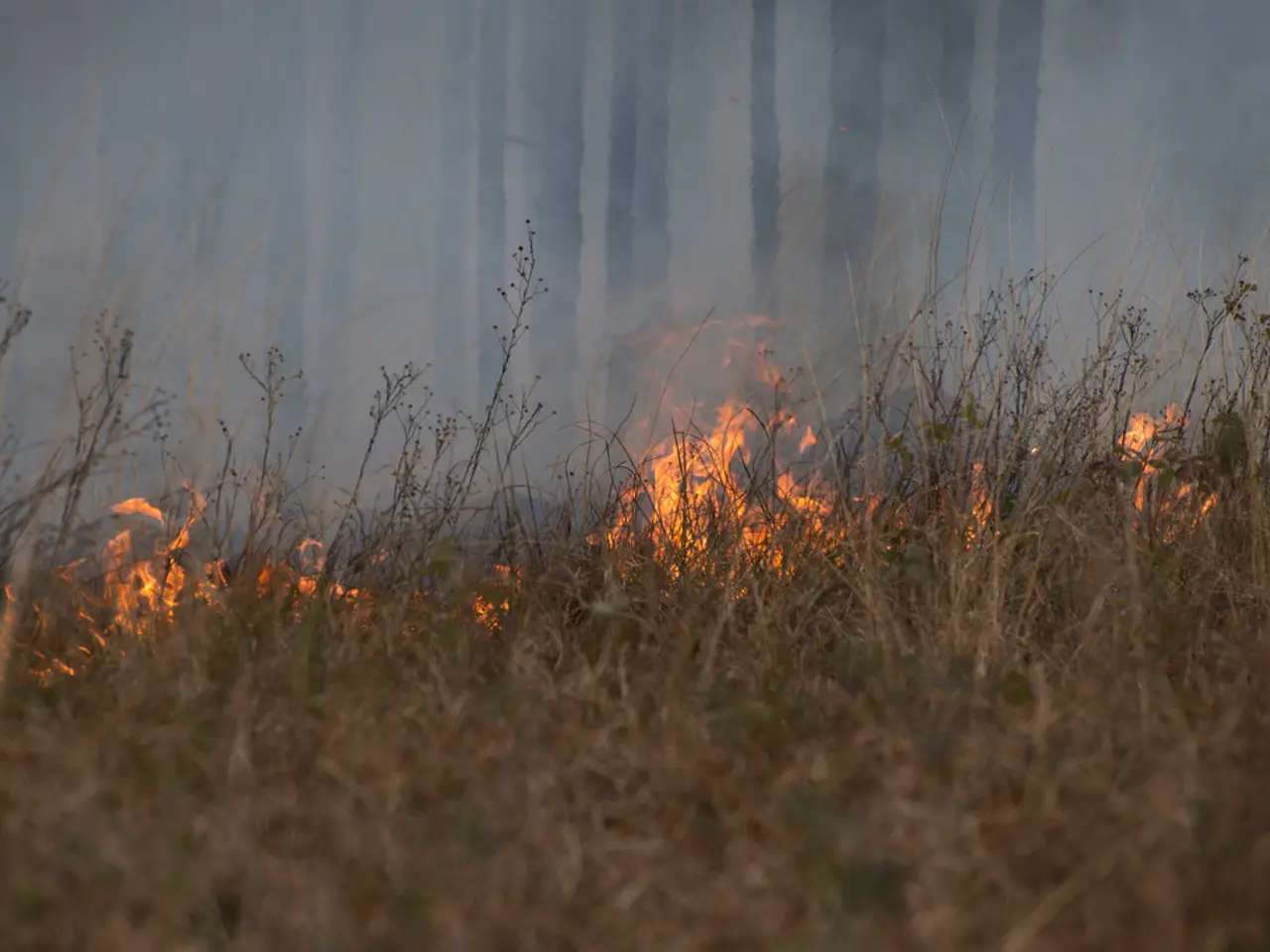Tropical Cyclone Bombus Generates Calamity on Australia's Eastern Shoreline - East Coast of Australia Experiences Disruption from Bomb Cyclone
The devastating "Bomb Cyclone" that hit Sydney and the Australian East Coast this week has caused significant disruptions to power supply and transportation, with severe impacts from storm surge and road closures.
The cyclone brought strong winds of up to 125 km/h and heavy rain, causing widespread damage to power infrastructure. As of this morning, approximately 9,100 homes and businesses remained without power despite efforts to restore electricity to 30,000 customers.
The storm led to major road closures across the region, with authorities urging residents to avoid non-essential travel due to hazardous conditions on flooded and blocked roads. Sydney's ferry and train services were delayed or suspended, compounding travel difficulties. Major domestic airlines including Qantas and Virgin Australia cancelled at least 55 domestic flights from Sydney, with some international flights also delayed.
Emergency services warned that travel conditions were extremely dangerous with ongoing high winds and flooding, and flood warnings extended across Greater Sydney and parts of the New South Wales coast. The bomb cyclone caused torrential rainfall, with some Sydney suburbs receiving up to 130 mm overnight and even higher totals in some locations. The intense rainfall led to flash flooding and flood warnings across Greater Sydney, including advice-level alerts for suburbs like Camden, Penrith, and North Richmond.
Officials warned of coastal erosion and storm surge impacts along the East Coast, exacerbated by unusually warm ocean temperatures which fueled the storm's intensity. The flooding and storm surge contributed directly to the closure of roads and increased the risk of damage to coastal communities, heightening emergency responses.
Due to the storm, authorities advised residents in New South Wales to work from home if possible. The region has been devastated by severe floods in May, and the bomb cyclone has only added to the misery. The Aussie Ark's conservation center in the Barrington Tops region was severely damaged by heavy rain, cyclonic winds, and heavy snowfall. Many ferry services in New South Wales were suspended due to storm surges.
In summary, the bomb cyclone has severely impacted Sydney’s power supply by causing widespread outages and hampered transportation through road closures, flight cancellations, and disrupted public transit, all largely driven by strong winds, heavy rain, and storm surge effects along the Australian East Coast. The storm has resulted in severe weather conditions, including waves as high as meters and heavy snowfall.
- In view of the ongoing power outages due to the storm and the hazardous travel conditions, the community policy may recommend employees to work from home to ensure their safety.
- The weather-forecasting agencies warned of extended flood warnings across Greater Sydney and the New South Wales coast, giving weather updates for the employment policy to consider possible adjustments, such as offering flexible working hours or emergency leave.








